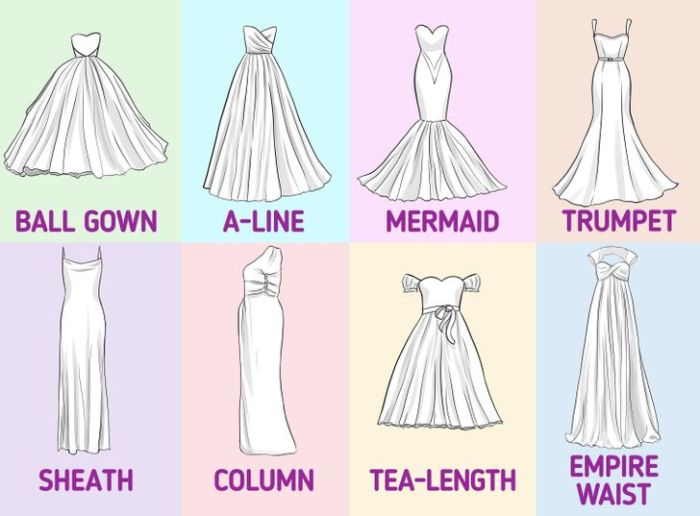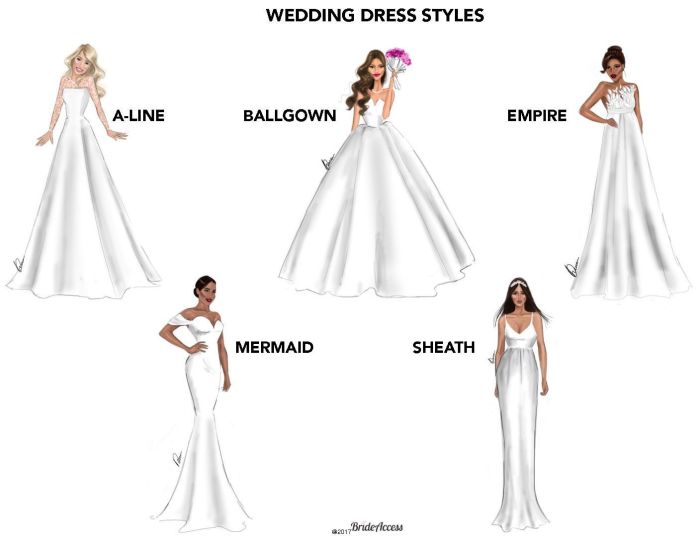What Kind of Wedding Dress Should I Have?
Finding Your Perfect Wedding Dress
What kind of wedding dress should i have – Choosing a wedding dress is a significant step in planning your big day. This guide will help you navigate the process, considering your vision, body type, venue, budget, and personal style to find the perfect gown.
Choosing the perfect wedding dress is a big decision! Consider your venue, personal style, and the overall vibe you envision for your special day. If you’re in the Woodbury, MN area, exploring options at local bridal shops is a great starting point; you might find exactly what you’re looking for by checking out the selection of wedding dresses Woodbury MN has to offer.
Ultimately, the ideal dress will reflect your unique personality and make you feel absolutely radiant.
Understanding Your Vision, What kind of wedding dress should i have
Before diving into specific dress styles, it’s crucial to define your overall wedding aesthetic. This will guide your dress selection and ensure a cohesive look.
- Romantic Wedding: Characterized by soft colors like blush pink and ivory, flowing fabrics like chiffon and lace, and a generally dreamy and ethereal atmosphere. The focus is on delicate details and a sense of timeless elegance.
- Modern Minimalist Wedding: Clean lines, sleek silhouettes, and a focus on simplicity are key. The color palette might include shades of white, gray, or metallics. The overall feel is sophisticated and understated.
- Bohemian Chic Wedding: This style incorporates natural elements, flowing fabrics, and a relaxed, free-spirited vibe. Earthy tones, floral accents, and lace details are common. The dress often features a relaxed silhouette and effortless elegance.
Mood Board: Imagine a palette of creamy ivory, dusty rose, and sage green. The textures would include delicate lace, soft silk, and the natural feel of linen. The overall feeling is romantic, yet relaxed and intimate, reflecting a garden party atmosphere.
| Silhouette | Pros | Cons | Body Type |
|---|---|---|---|
| A-line | Flattering on most body types, comfortable, versatile | Can be less dramatic than other styles | Hourglass, pear, apple, rectangle |
| Ballgown | Creates a dramatic and princess-like look, hides lower body imperfections | Can be overwhelming for smaller frames, less versatile for different venues | Hourglass, pear |
| Mermaid | Accentuates curves, creates a glamorous and sophisticated look | Can be less comfortable for dancing, may not be suitable for all body types | Hourglass, pear |
Body Type and Shape

Source: tsp.li
Understanding your body type is essential for choosing a dress that accentuates your best features.
Key Features: Let’s say the key features are a defined waist, fuller hips, and a relatively straight upper body. The goal is to emphasize the waist and balance the proportions.
Necklines: A sweetheart neckline would beautifully accentuate the bust and shoulders, while a V-neck would create a lengthening effect on the torso, balancing the fuller hips. A halter neckline could also work well, showcasing the shoulders and upper body.
Fabrics: Fabrics with a good drape, such as chiffon or silk charmeuse, would flow gracefully over the hips, creating a balanced silhouette. Structured fabrics should be avoided in areas needing less emphasis.
Venue and Setting
The venue significantly influences the appropriate dress style. A formal ballroom calls for a different gown than a beachside ceremony.
Venue Description: Imagine a rustic barn with exposed beams, string lights, and wildflowers. The atmosphere is romantic and relaxed.
Venue Influence: The rustic setting suggests a dress that complements the informal ambiance, perhaps a flowy A-line gown or a boho-inspired dress with lace details.
- Formal Setting: Ballgown, mermaid, or a classic sheath dress in luxurious fabrics like silk or satin.
- Casual Setting: A-line, boho, or tea-length dress in lighter fabrics like chiffon or lace.
- Transitional Setting (Semi-formal): Fit-and-flare, empire waist, or a simple sheath dress in a mid-weight fabric like crepe.
Budget and Practical Considerations
Setting a realistic budget is crucial. Consider the cost of alterations, accessories, and potential cleaning.
Budget Range: Let’s assume a budget of $2,000 – $3,000.
Price Points: Lace and beading significantly increase the cost. Simple fabrics like crepe or satin are more budget-friendly than intricate lace or heavily embellished fabrics.
- Comfort: Choose a dress that allows for easy movement and won’t restrict your ability to dance and enjoy the day.
- Practicality: Consider the weather, venue, and activities planned. A long train might be impractical for an outdoor ceremony.
- Alterations: Budget for alterations to ensure a perfect fit.
Personal Style and Preferences

Source: boho-weddings.com
Your personal style should be reflected in your dress choice.
Personal Style Adjectives: Romantic, classic, and effortless.
Style Influence: The romantic and classic aspects might lead to a preference for lace, a flowing silhouette, and perhaps a modest neckline. The effortless aspect suggests avoiding overly fussy details or overly structured styles.
- Long Sleeves: Can add elegance and sophistication to A-line or sheath silhouettes.
- Short Sleeves: Can create a playful and youthful look, especially with a fit-and-flare dress.
- Sleeveless: A versatile option suitable for various silhouettes and seasons.
Exploring Different Dress Styles
Researching different styles will help you narrow down your options.
- A-line gown with delicate lace detailing: A classic and timeless choice, flattering on various body types.
- Bohemian-inspired gown with flowing chiffon fabric: Perfect for a relaxed outdoor ceremony.
- Sleek sheath dress with a modern neckline: Ideal for a minimalist or contemporary wedding.
Fabric Suitability: Silk and satin are luxurious choices for cooler weather, while cotton or linen are suitable for warmer climates. Lace is versatile and can be used year-round.
Visual Description: Imagine a gown crafted from ivory silk charmeuse, featuring an A-line silhouette and a delicate sweetheart neckline. Subtle beading accents the waistline, while a chapel-length train adds a touch of elegance. The overall effect is romantic and timeless.
Query Resolution: What Kind Of Wedding Dress Should I Have
How far in advance should I start shopping for my wedding dress?
Ideally, begin shopping 9-12 months before your wedding to allow ample time for alterations and potential delays.
What should I wear to a wedding dress appointment?
Wear comfortable undergarments similar to what you’d wear under your dress. Nude-colored undergarments are recommended.
How many people should I bring to my appointment?
Bring a small, supportive group – 2-3 people maximum – whose opinions you value.
Can I alter a wedding dress significantly?
Yes, many alterations are possible, but major changes can be costly and time-consuming. Discuss this with your seamstress.
What if I don’t find “the one” at my first appointment?
Don’t panic! It’s common to try on several dresses before finding the perfect one. Keep an open mind and enjoy the process.

















